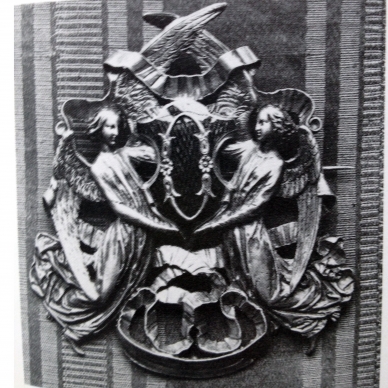Wagner Karl

Wagner, Karl (1799-1841)
Following the French Revolution in Paris, the German jeweller and silversmith becomes famous for the revival of the niello technique. His works idealise Historism.
Born in Berlin, Wagner becomes a master craftsman in 1823. Von Beuth, Director of the Prussian Trades Institute, encourages him to work with the niello technique of the 16th century. He begins working in Paris in 1830 and starts a company with the stonecutter Mention. His works are distinguished by a mastery of historical techniques of goldsmithery. With astounding virtuosity, he dedicates himself to embossing/expanding by beating and chiseling, as well as working with enamel. He then introduces France to niello, a technique that for a long time was used only in Russian Tula. He patents his procedure. The Duke of Orléans commissions Wagner to produce a table service using the niello technique, as well as several other objects. With pieces of jewellery inspired by forms of the late Renaissance and early Baroque, he brings new impulses to contemporary artisan craftwork and is considered to be an influential and innovative personality. He receives additional impulse from King Louis Philippe of France, whose patronage he enjoys and who initiates the restoration of the Palace of Versailles. Ornament that had drifted into obscurity, such as scrollwork incorporating allegorical figures, is taken up again with his goldsmith craftwork. In 1835 Wagner is supported by up to 50 craftspeople while he himself enjoys an excellent reputation as an outstanding, talented artisan who delivers interesting designs and can both model and set with excellence. In 1837 he is dubbed a Knight of the Legion of Honour. At the age of 42, Karl Wagner dies as the result of a tragic accident. The Danish gold and silversmith Frédéric-Jules Rudolphi, who studies under Wagner and becomes his partner, takes over the workshop in 1841. He continues to dedicate himself to Historism, copying the art of Imperial Treasury.
Wagner, Karl 1799 -1841
Der deutsche Juwelier und Silberschmied ist in Paris nach der Französischen Revolution berühmt für die Wiederbelebung der alten Niello-Technik. Seine Arbeiten sind dem Historismus gewidmet.
Der in Berlin geborene Wagner macht seinen Meister 1823. Von Beuth, Direktor des Preussischen Gewerbeinstituts, ermutigt ihn, sich mit der Niello-Technik des 16. Jahrhunderts zu beschäftigen. Seit 1830 ist er in Paris tätig und gründet eine Firma mit dem Steinschneider Mention. Seine Arbeiten zeichnen sich durch die meisterhafte Beherrschung alter Goldschmiedetechniken aus. Mit großer Virtuosität widmet er sich dem Treiben und Ziselieren, sowie dem Umgang mit Email. Schließlich führt er das Niello, das lange Zeit nur noch im russischen Tula angewandt worden war, in Frankreich ein und lässt sich sein Verfahren patentieren. Der Herzog von Orléans bestellt ein Tafelservice in Niellotechnik und weitere Objekte bei Wagner. Mit seinen von Formen der Spätrenaissance und des Frühbarock inspirierten Schmuckstücken gibt er dem zeitgenössischen Kunsthandwerk neue Impulse und gilt als einflußreiche, innovative Persönlichkeit. Zusätzlichen Anstoß gibt ihm die von König Louis Philippe von Frankreich – unter dessen Patronage er steht – initiierte Restaurierung von Schloss Versailles. In Vergessenheit geratene Ornamente, wie etwa das Rollwerk in Verbindung mit allegorischen Figuren, greift er in seinen Goldschmiedearbeiten auf. Um 1835 arbeiten bis zu 50 Handwerker für Wagner, der selbst den Ruf eines hervorragenden, talentierten Kunsthandwerkers genießt, der interessante Entwürfe liefert, gut modelliert und fasst. 1837 wird er zum Ritter der Ehrenlegion ernannt. Im Alter von nur 42 Jahren kommt Karl Wagner durch einen tragischen Unfall ums Leben. Der Dänische Gold- und Silberschmied Frédéric-Jules Rudolphi, der bei Wagner lernt und Partner ist, übernimmt 1841 die Werkstatt. Er widmet sich weiterhin dem Historismus und kopiert Schatzkammerkunst.